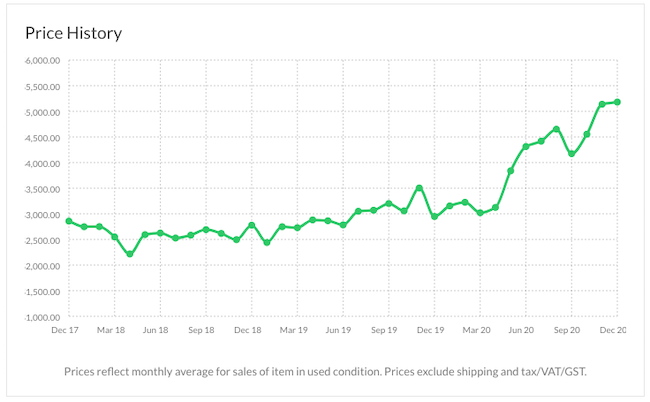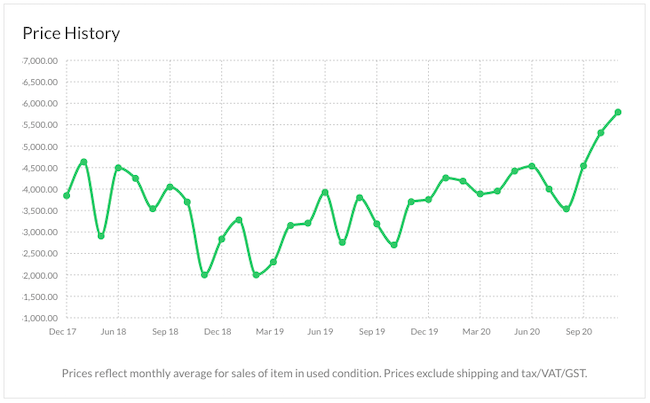We recently noticed something unusual. Sale prices for the Moog Minimoog Model D 2016 reissue were trending higher than the original here on Reverb. Traditional wisdom says the older something is, the more valuable it is, but that’s not always true. It’s certainly not the case here. The answer is likely a bit more complicated than that.
Before we start answering that question, let’s take a closer look at the two variations of Minimoog.
The original Minimoog is perhaps the most iconic synthesizer of all time. It debuted in 1971 and had a manufacturing run of 10 years, ending in 1981. It was the first portable synthesizer built with a keyboard, the first sold in musical instrument shops, and for many, the first synthesizer they ever heard. It’s a bonafide classic—but we don’t need to tell you that.
In 2016, Moog reissued the Minimoog. Given the 35 years that had passed between the ending of the run of the original Minimoogs, Moog couldn’t just re-release it as is. They made a few small improvements, most notably in the form of a Fatar keybed and MIDI implementation. They also included a number of in-built modifications, such as a dedicated analog LFO, cableless feedback, a mixer overload mod, and CV outputs for pitch, gate, velocity and after pressure. After just one year, due to a scarcity of parts as a result of high demand, Moog decided to halt manufacturing.

Since the end of the run of the reissue, prices have remained relatively steady. Taking a look at the price guide, we can see that things go along as expected for the first three years. The reissue originally sold for $3,749, and this is reflected in its used price. Until this year, the price hovered around $3000. During the same time period, as we can see from its price guide, prices of the original fluctuated more wildly, with some as low as $2000 and as high as $4500. This discrepancy in prices is likely due to variations in condition.
In spring 2020, reissue prices suddenly started to climb. They went from that stable $3000 to well surpassing $6000 by November. Prices on original Model Ds also began a similar upward trajectory, but not until August. They’re currently hovering around $6000.
On average, the Minimoog reissue prices currently sit just a touch higher than the original, though the original model is certainly close behind. This has been the story for the last three months, with the two neck-and-neck and the reissue actually trending higher than the original for much of the late summer.

So, what’s going on? Why is the reissue suddenly so competitive, price-wise?
While the overall 2020 rise in prices on both units is likely due to the influence of COVID-19 and people wanting something to do while in lockdown, this is similar enough for both. To find out why the reissue should be so attractive, we took an informal poll on a popular synthesizer group on Facebook. We asked: If you had the means, which would you rather buy—an original or a reissue? We also asked people to leave comments on why they voted the way they did.
At the time of publication, the results were that the reissue got 57 votes, and the original got 11 votes. For the members of this particular group, the clear choice was the reissue. As to why, the comments section provided the answers. "I have vintage gear," wrote group member Jim Heywood. "It always needs something done to it. If I were buying a Minimoog, I'd rather have something new that just works."
Wayne Lohr, who owns a number of classic synths like the Korg MS-20, Roland Juno-106, and even an original Minimoog, gave a similar response. "Vintage gear, while cool, is notoriously unreliable. There are many faithful reproductions that do the job reliably."
Many other commenters echoed these sentiments about reliability. The other big attractor was MIDI. Despite the limited functionality in the reissue Minimoog, the presence of MIDI was enough to sway a clear majority away from a vintage unit. One last factor that could have helped boost prices of the reissue is scarcity of units. The original was in production for 10 years while the reissue was only made for one year. It stands to reason that there would be fewer units on the market, thus helping inflate prices.
While the original is certainly still a classic, at this moment in time a number of people seem to be drawn to the reliability and features of the reissue. Those who missed it the first time around may be trying to snap one up now before prices go any higher. If COVID-19 continues to drag out, prices may do just that.
